#Employee performance tracking app
Explore tagged Tumblr posts
Text
Boost Team Efficiency with ONEMONITAR
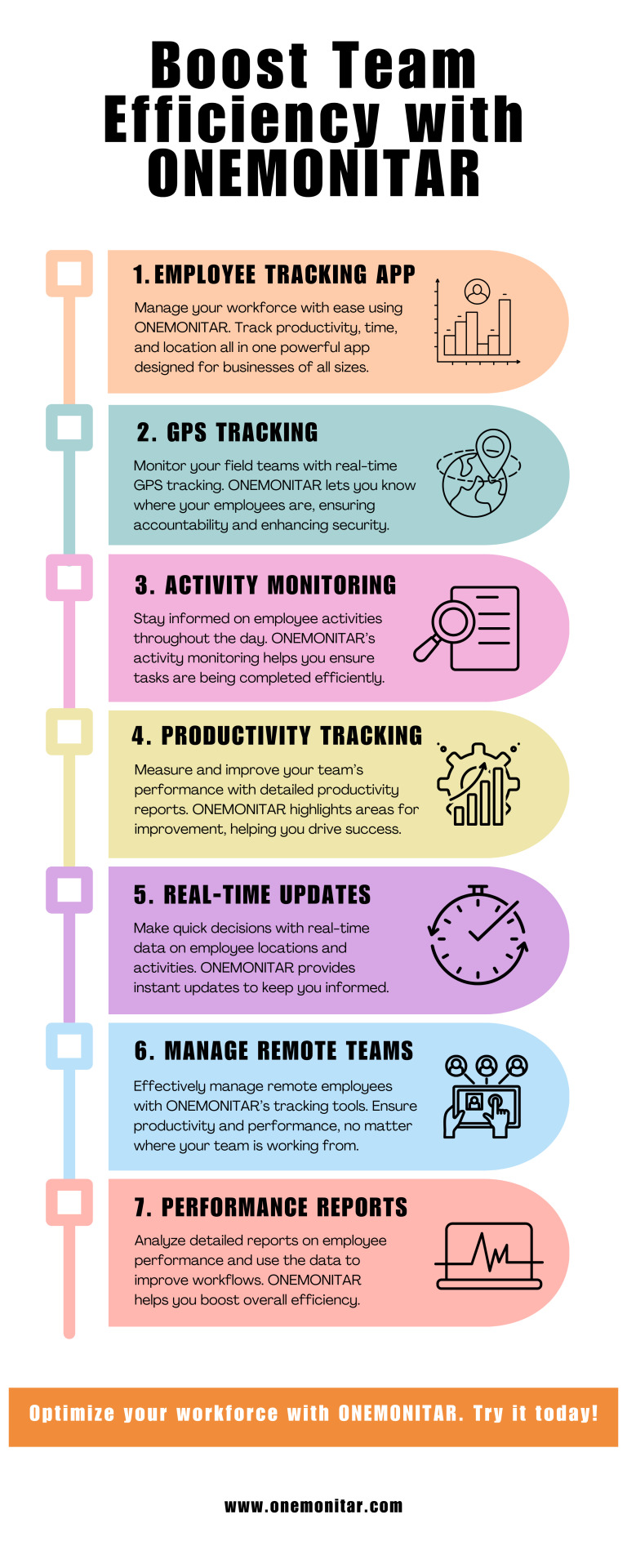
Looking for an efficient way to manage your team and boost productivity? Check out ONEMONITAR's employee tracking app infographic! Discover how you can easily track employee activities, monitor GPS locations, and get real-time updates—all from one app. Whether you're managing a remote team or need detailed performance reports, ONEMONITAR helps you stay on top of your workforce and improve results.
Boost your business performance today with ONEMONITAR!
#Best employee tracking app#Employee monitoring software#GPS employee tracking app#Employee activity monitoring app#Employee productivity tracking app#Employee tracking app for Android#Remote employee tracking app#Real-time employee tracking app#Employee location tracking app#Employee tracking software for small business#Employee performance tracking app#Mobile employee tracking app
0 notes
Text
Leveraging Technology for Business Growth: Transforming Performance Management for Success
Introduction:
In the fast-paced and competitive business environment of today, leveraging technology has become imperative for driving growth and maximising performance. One critical area where technology can make a significant impact is in performance management. By harnessing performance management systems, tools, and processes, businesses can optimise employee productivity, improve teamwork, and elevate overall performance. This blog delves into the transformative role of technology in performance management, ultimately leading to enhanced efficiency, heightened employee engagement, and sustained business success.
1. Performance Management Systems: Streamlining Performance Tracking and Evaluation
Performance management systems provide a structured framework for tracking and evaluating employee performance. These systems facilitate the establishment of performance goals, the monitoring of progress, and the execution of regular performance reviews. Through the utilisation of performance management software, businesses can automate these processes, resulting in greater efficiency and accuracy. Such systems empower managers and employees with real-time visibility into performance metrics, enabling data-driven decision-making and targeted performance improvement strategies.
2. Performance Planning: Aligning Goals and Objectives
Effective performance planning is paramount to achieving organisational goals. Technology serves as a facilitator by streamlining the performance planning process through tools for goal setting, cascading objectives, and progress tracking. Performance management software empowers managers to create and assign performance targets to individuals or teams, fostering alignment with the organisation's objectives. This bolsters clarity, focus, and accountability among employees, ultimately driving performance excellence.
3. Team Performance Management: Cultivating Collaboration and Productivity
Teams play a pivotal role in attaining business success. Technology offers an array of team management tools that facilitate seamless collaboration, efficient communication, and streamlined task allocation. Task management software empowers teams to organise, prioritise, and monitor their work, ensuring optimal task completion. This cultivates a culture of teamwork, enhances coordination, and augments overall productivity. Furthermore, virtual business tools enable geographically dispersed teams to collaborate seamlessly, fostering synergy in today's digital work environment.
4. Employee Performance Tracking and Analysis: Data-Driven Insights for Growth
Technology provides sophisticated tools for tracking and analysing employee performance. Employee time tracking apps and software enable businesses to monitor task durations, identify bottlenecks, and optimise resource allocation. These tools yield insights into employee productivity patterns and reveal areas for improvement. By leveraging employee performance data, businesses can implement targeted training programs, recognize high-performing employees, and make informed decisions to propel growth.
5. Attendance and Location Tracking: Streamlining Workforce Management
Efficient attendance and location tracking are integral to effective workforce management. Employee attendance tracker apps and software automate the attendance recording process, eradicating manual errors and simplifying payroll management. Moreover, employee location tracking tools allow businesses to monitor and map employee locations in real-time, ensuring safety, optimising resource allocation, and heightening operational efficiency.
6. Key Performance Indicator (KPI) Management: Measuring Success
Key Performance Indicators (KPIs) serve as pivotal metrics for measuring and monitoring performance. Technology equips businesses with KPI management tools that facilitate the definition, tracking, and analysis of performance against specific goals. These tools provide visually appealing representations of performance metrics, enhancing comprehension for managers and employees alike. Real-time updates offered by KPI trackers enable timely interventions and continual improvement efforts.
Conclusion:
In the digital age, harnessing technology for performance management is not merely a luxury but a necessity for business growth and success. By embracing performance management systems, leveraging performance tracking tools, embracing teamwork management solutions, and optimizing attendance tracking and KPI management tools, businesses can optimize employee performance, foster collaboration, and drive productivity. The power of technology lies in its ability to provide data-driven insights, streamline processes, and facilitate informed decision-making. By capitalizing on technology's potential, businesses can transform their performance management practices, unlock employee potential, and achieve sustainable growth in today's dynamic business landscape.
#work management#performances#daily task tracking#performance tracking#performance management#performance management system#performance management tools#team performance management#work management software#employee attendance app#attendance tracker app#task management software#task management apps#daily task tracker#human resource management system#task management#gps tracker#employee attendance#appraisal management#performance tracker app
1 note
·
View note
Link
Employee productivity is one of the key factors that determine the success of an organization. Many companies have recognized the importance of employee productivity tracking software and have started using productivity tracking software.
#Productivity Monitoring Software#employee productivity monitoring software#employee performance monitoring tool#employee performance tracking software#employee productivity tracker software#best productivity tracker app
0 notes
Text
The reverse-centaur apocalypse is upon us
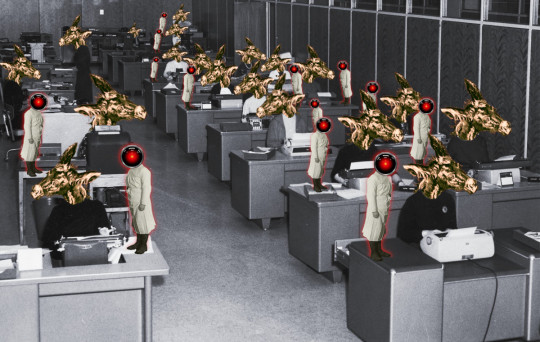
I'm coming to DEFCON! On Aug 9, I'm emceeing the EFF POKER TOURNAMENT (noon at the Horseshoe Poker Room), and appearing on the BRICKED AND ABANDONED panel (5PM, LVCC - L1 - HW1–11–01). On Aug 10, I'm giving a keynote called "DISENSHITTIFY OR DIE! How hackers can seize the means of computation and build a new, good internet that is hardened against our asshole bosses' insatiable horniness for enshittification" (noon, LVCC - L1 - HW1–11–01).

In thinking about the relationship between tech and labor, one of the most useful conceptual frameworks is "centaurs" vs "reverse-centaurs":
https://pluralistic.net/2022/04/17/revenge-of-the-chickenized-reverse-centaurs/
A centaur is someone whose work is supercharged by automation: you are a human head atop the tireless body of a machine that lets you get more done than you could ever do on your own.
A reverse-centaur is someone who is harnessed to the machine, reduced to a mere peripheral for a cruelly tireless robotic overlord that directs you to do the work that it can't, at a robotic pace, until your body and mind are smashed.
Bosses love being centaurs. While workplace monitoring is as old as Taylorism – the "scientific management" of the previous century that saw labcoated frauds dictating the fine movements of working people in a kabuki of "efficiency" – the lockdowns saw an explosion of bossware, the digital tools that let bosses monitor employees to a degree and at a scale that far outstrips the capacity of any unassisted human being.
Armed with bossware, your boss becomes a centaur, able to monitor you down to your keystrokes, the movements of your eyes, even the ambient sound around you. It was this technology that transformed "work from home" into "live at work." But bossware doesn't just let your boss spy on you – it lets your boss control you. \
It turns you into a reverse-centaur.
"Data At Work" is a research project from Cracked Labs that dives deep into the use of surveillance and control technology in a variety of workplaces – including workers' own cars and homes:
https://crackedlabs.org/en/data-work
It consists of a series of papers that take deep dives into different vendors' bossware products, exploring how they are advertised, how they are used, and (crucially) how they make workers feel. There are also sections on how these interact with EU labor laws (the project is underwritten by the Austrian Arbeiterkammer), with the occasional aside about how weak US labor laws are.
The latest report in the series comes from Wolfie Christl, digging into Microsoft's "Dynamics 365," a suite of mobile apps designed to exert control over "field workers" – repair technicians, security guards, cleaners, and home help for ill, elderly and disabled people:
https://crackedlabs.org/dl/CrackedLabs_Christl_MobileWork.pdf
It's…not good. Microsoft advises its customers to use its products to track workers' location every "60 to 300 seconds." Workers are given tasks broken down into subtasks, each with its own expected time to completion. Workers are expected to use the app every time they arrive at a site, begin or complete a task or subtask, or start or end a break.
For bosses, all of this turns into a dashboard that shows how each worker is performing from instant to instant, whether they are meeting time targets, and whether they are spending more time on a task than the client's billing rate will pay for. Each work order has a clock showing elapsed seconds since it was issued.
For workers, the system generates new schedules with new work orders all day long, refreshing your work schedule as frequently as twice per hour. Bosses can flag workers as available for jobs that fall outside their territories and/or working hours, and the system will assign workers to jobs that require them to work in their off hours and travel long distances to do so.
Each task and subtask has a target time based on "AI" predictions. These are classic examples of Goodhart's Law: "any metric eventually becomes a target." The average time that workers take becomes the maximum time that a worker is allowed to take. Some jobs are easy, and can be completed in less time than assigned. When this happens, the average time to do a job shrinks, and the time allotted for normal (or difficult) jobs contracts.
Bosses get stack-ranks of workers showing which workers closed the most tickets, worked the fastest, spent the least time idle between jobs, and, of course, whether the client gave them five stars. Workers know it, creating an impossible bind: to do the job well, in a friendly fashion, the worker has to take time to talk with the client, understand their needs, and do the job. Anything less will generate unfavorable reports from clients. But doing this will blow through time quotas, which produces bad reports from the bossware. Heads you lose, tails the boss wins.
Predictably, Microsoft has shoveled "AI" into every corner of this product. Bosses don't just get charts showing them which workers are "underperforming" – they also get summaries of all the narrative aspects of the workers' reports (e.g. "My client was in severe pain so I took extra time to make her comfortable before leaving"), filled with the usual hallucinations and other botshit.
No boss could exert this kind of fine-grained, soul-destroying control over any workforce, much less a workforce that is out in the field all day, without Microsoft's automation tools. Armed with Dynamics 365, a boss becomes a true centaur, capable of superhuman feats of labor abuse.
And when workers are subjected to Dynamics 365, they become true reverse-centaurs, driven by "digital whips" to work at a pace that outstrips the long-term capacity of their minds and bodies to bear it. The enthnographic parts of the report veer between chilling and heartbreaking.
Microsoft strenuously objects to this characterization, insisting that their tool (which they advise bosses to use to check on workers' location every 60-300 seconds) is not a "surveillance" tool, it's a "coordination" tool. They say that all the AI in the tool is "Responsible AI," which is doubtless a great comfort to workers.
In Microsoft's (mild) defense, they are not unique. Other reports in the series show how retail workers and hotel housekeepers are subjected to "despot on demand" services provided by Oracle:
https://crackedlabs.org/en/data-work/publications/retail-hospitality
Call centers, are even worse. After all, most of this stuff started with call centers:
https://crackedlabs.org/en/data-work/publications/callcenter
I've written about Arise, a predatory "work from home" company that targets Black women to pay the company to work for it (they also have to pay if they quit!). Of course, they can be fired at will:
https://pluralistic.net/2021/07/29/impunity-corrodes/#arise-ye-prisoners
There's also a report about Celonis, a giant German company no one has ever heard of, which gathers a truly nightmarish quantity of information about white-collar workers' activities, subjecting them to AI phrenology to judge their "emotional quality" as well as other metrics:
https://crackedlabs.org/en/data-work/publications/processmining-algomanage
As Celonis shows, this stuff is coming for all of us. I've dubbed this process "the shitty technology adoption curve": the terrible things we do to prisoners, asylum seekers and people in mental institutions today gets repackaged tomorrow for students, parolees, Uber drivers and blue-collar workers. Then it works its way up the privilege gradient, until we're all being turned into reverse-centaurs under the "digital whip" of a centaur boss:
https://pluralistic.net/2020/11/25/the-peoples-amazon/#clippys-revenge
In mediating between asshole bosses and the workers they destroy, these bossware technologies do more than automate: they also insulate. Thanks to bossware, your boss doesn't have to look you in the eye (or come within range of your fists) to check in on you every 60 seconds and tell you that you've taken 11 seconds too long on a task. I recently learned a useful term for this: an "accountability sink," as described by Dan Davies in his new book, The Unaccountability Machine, which is high on my (very long) list of books to read:
https://profilebooks.com/work/the-unaccountability-machine/

Support me this summer on the Clarion Write-A-Thon and help raise money for the Clarion Science Fiction and Fantasy Writers' Workshop!

If you'd like an essay-formatted version of this post to read or share, here's a link to it on pluralistic.net, my surveillance-free, ad-free, tracker-free blog:
https://pluralistic.net/2024/08/02/despotism-on-demand/#virtual-whips

Image: Cryteria (modified) https://commons.wikimedia.org/wiki/File:HAL9000.svg
CC BY 3.0 https://creativecommons.org/licenses/by/3.0/deed.en
#pluralistic#bossware#surveillance#microsoft#gig work#reverse centaurs#labor#Wolfie Christl#cracked labs#data at work#AlgorithmWatch#Arbeiterkammer#austria#call centers#retail#dystopianism#torment nexus#shitty technology adoption curve
94 notes
·
View notes
Text
"Just weeks before the implosion of AllHere, an education technology company that had been showered with cash from venture capitalists and featured in glowing profiles by the business press, America’s second-largest school district was warned about problems with AllHere’s product.
As the eight-year-old startup rolled out Los Angeles Unified School District’s flashy new AI-driven chatbot — an animated sun named “Ed” that AllHere was hired to build for $6 million — a former company executive was sending emails to the district and others that Ed’s workings violated bedrock student data privacy principles.
Those emails were sent shortly before The 74 first reported last week that AllHere, with $12 million in investor capital, was in serious straits. A June 14 statement on the company’s website revealed a majority of its employees had been furloughed due to its “current financial position.” Company founder and CEO Joanna Smith-Griffin, a spokesperson for the Los Angeles district said, was no longer on the job.
Smith-Griffin and L.A. Superintendent Alberto Carvalho went on the road together this spring to unveil Ed at a series of high-profile ed tech conferences, with the schools chief dubbing it the nation’s first “personal assistant” for students and leaning hard into LAUSD’s place in the K-12 AI vanguard. He called Ed’s ability to know students “unprecedented in American public education” at the ASU+GSV conference in April.
Through an algorithm that analyzes troves of student information from multiple sources, the chatbot was designed to offer tailored responses to questions like “what grade does my child have in math?” The tool relies on vast amounts of students’ data, including their academic performance and special education accommodations, to function.
Meanwhile, Chris Whiteley, a former senior director of software engineering at AllHere who was laid off in April, had become a whistleblower. He told district officials, its independent inspector general’s office and state education officials that the tool processed student records in ways that likely ran afoul of L.A. Unified’s own data privacy rules and put sensitive information at risk of getting hacked. None of the agencies ever responded, Whiteley told The 74.
...
In order to provide individualized prompts on details like student attendance and demographics, the tool connects to several data sources, according to the contract, including Welligent, an online tool used to track students’ special education services. The document notes that Ed also interfaces with the Whole Child Integrated Data stored on Snowflake, a cloud storage company. Launched in 2019, the Whole Child platform serves as a central repository for LAUSD student data designed to streamline data analysis to help educators monitor students’ progress and personalize instruction.
Whiteley told officials the app included students’ personally identifiable information in all chatbot prompts, even in those where the data weren’t relevant. Prompts containing students’ personal information were also shared with other third-party companies unnecessarily, Whiteley alleges, and were processed on offshore servers. Seven out of eight Ed chatbot requests, he said, are sent to places like Japan, Sweden, the United Kingdom, France, Switzerland, Australia and Canada.
Taken together, he argued the company’s practices ran afoul of data minimization principles, a standard cybersecurity practice that maintains that apps should collect and process the least amount of personal information necessary to accomplish a specific task. Playing fast and loose with the data, he said, unnecessarily exposed students’ information to potential cyberattacks and data breaches and, in cases where the data were processed overseas, could subject it to foreign governments’ data access and surveillance rules.
Chatbot source code that Whiteley shared with The 74 outlines how prompts are processed on foreign servers by a Microsoft AI service that integrates with ChatGPT. The LAUSD chatbot is directed to serve as a “friendly, concise customer support agent” that replies “using simple language a third grader could understand.” When querying the simple prompt “Hello,” the chatbot provided the student’s grades, progress toward graduation and other personal information.
AllHere’s critical flaw, Whiteley said, is that senior executives “didn’t understand how to protect data.”
...
Earlier in the month, a second threat actor known as Satanic Cloud claimed it had access to tens of thousands of L.A. students’ sensitive information and had posted it for sale on Breach Forums for $1,000. In 2022, the district was victim to a massive ransomware attack that exposed reams of sensitive data, including thousands of students’ psychological evaluations, to the dark web.
With AllHere’s fate uncertain, Whiteley blasted the company’s leadership and protocols.
“Personally identifiable information should be considered acid in a company and you should only touch it if you have to because acid is dangerous,” he told The 74. “The errors that were made were so egregious around PII, you should not be in education if you don’t think PII is acid.”
Read the full article here:
https://www.the74million.org/article/whistleblower-l-a-schools-chatbot-misused-student-data-as-tech-co-crumbled/
17 notes
·
View notes
Text
AI Agent Development: How to Create Intelligent Virtual Assistants for Business Success
In today's digital landscape, businesses are increasingly turning to AI-powered virtual assistants to streamline operations, enhance customer service, and boost productivity. AI agent development is at the forefront of this transformation, enabling companies to create intelligent, responsive, and highly efficient virtual assistants. In this blog, we will explore how to develop AI agents and leverage them for business success.

Understanding AI Agents and Virtual Assistants
AI agents, or intelligent virtual assistants, are software programs that use artificial intelligence, machine learning, and natural language processing (NLP) to interact with users, automate tasks, and make decisions. These agents can be deployed across various platforms, including websites, mobile apps, and messaging applications, to improve customer engagement and operational efficiency.
Key Features of AI Agents
Natural Language Processing (NLP): Enables the assistant to understand and process human language.
Machine Learning (ML): Allows the assistant to improve over time based on user interactions.
Conversational AI: Facilitates human-like interactions.
Task Automation: Handles repetitive tasks like answering FAQs, scheduling appointments, and processing orders.
Integration Capabilities: Connects with CRM, ERP, and other business tools for seamless operations.
Steps to Develop an AI Virtual Assistant
1. Define Business Objectives
Before developing an AI agent, it is crucial to identify the business goals it will serve. Whether it's improving customer support, automating sales inquiries, or handling HR tasks, a well-defined purpose ensures the assistant aligns with organizational needs.
2. Choose the Right AI Technologies
Selecting the right technology stack is essential for building a powerful AI agent. Key technologies include:
NLP frameworks: OpenAI's GPT, Google's Dialogflow, or Rasa.
Machine Learning Platforms: TensorFlow, PyTorch, or Scikit-learn.
Speech Recognition: Amazon Lex, IBM Watson, or Microsoft Azure Speech.
Cloud Services: AWS, Google Cloud, or Microsoft Azure.
3. Design the Conversation Flow
A well-structured conversation flow is crucial for user experience. Define intents (what the user wants) and responses to ensure the AI assistant provides accurate and helpful information. Tools like chatbot builders or decision trees help streamline this process.
4. Train the AI Model
Training an AI assistant involves feeding it with relevant datasets to improve accuracy. This may include:
Supervised Learning: Using labeled datasets for training.
Reinforcement Learning: Allowing the assistant to learn from interactions.
Continuous Learning: Updating models based on user feedback and new data.
5. Test and Optimize
Before deployment, rigorous testing is essential to refine the AI assistant's performance. Conduct:
User Testing: To evaluate usability and responsiveness.
A/B Testing: To compare different versions for effectiveness.
Performance Analysis: To measure speed, accuracy, and reliability.
6. Deploy and Monitor
Once the AI assistant is live, continuous monitoring and optimization are necessary to enhance user experience. Use analytics to track interactions, identify issues, and implement improvements over time.
Benefits of AI Virtual Assistants for Businesses
1. Enhanced Customer Service
AI-powered virtual assistants provide 24/7 support, instantly responding to customer queries and reducing response times.
2. Increased Efficiency
By automating repetitive tasks, businesses can save time and resources, allowing employees to focus on higher-value tasks.
3. Cost Savings
AI assistants reduce the need for large customer support teams, leading to significant cost reductions.
4. Scalability
Unlike human agents, AI assistants can handle multiple conversations simultaneously, making them highly scalable solutions.
5. Data-Driven Insights
AI assistants gather valuable data on customer behavior and preferences, enabling businesses to make informed decisions.
Future Trends in AI Agent Development
1. Hyper-Personalization
AI assistants will leverage deep learning to offer more personalized interactions based on user history and preferences.
2. Voice and Multimodal AI
The integration of voice recognition and visual processing will make AI assistants more interactive and intuitive.
3. Emotional AI
Advancements in AI will enable virtual assistants to detect and respond to human emotions for more empathetic interactions.
4. Autonomous AI Agents
Future AI agents will not only respond to queries but also proactively assist users by predicting their needs and taking independent actions.
Conclusion
AI agent development is transforming the way businesses interact with customers and streamline operations. By leveraging cutting-edge AI technologies, companies can create intelligent virtual assistants that enhance efficiency, reduce costs, and drive business success. As AI continues to evolve, embracing AI-powered assistants will be essential for staying competitive in the digital era.
4 notes
·
View notes
Text
Collaborative Tools That Make Remote Work a Breeze
Even if working remotely is becoming more and more popular, online collaboration tools have made it easy for distant employees to stay in touch. According to recent studies, the number of remote workers has increased in the last ten years. Furthermore, the demand for remote work solutions is still growing globally, even in the wake of the well-known Yahoo ban in 2015 that forced employees to return to the office.
Innovative management techniques and cutting-edge technological advancements that allow leading businesses to hire more remote workers are some of the factors propelling this expansion.
However, your staff may be less productive if you don't have effective tools. Therefore, you may avoid a lot of issues by selecting online collaboration tools that will help with teamwork.
Below there is a list of online collaboration tools you will find useful when working with a remote team.
Troop messenger
Troop Messenger is a frontrunner when it comes to more dynamic team collboration. Because of how easy it is to use in an entrepreneurial setting, it is one of the few online collaboration tools that can meet the needs of any team.
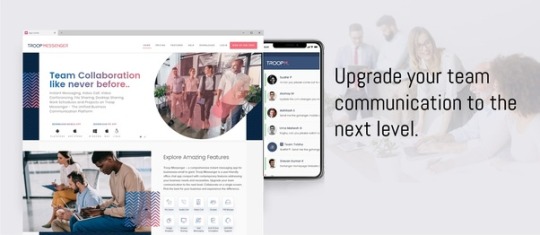
Troop Messenger acts as a complete online collaboration tool and provides you with immediate access to a wide range of features, including:
Instant messaging
Making video calls
Conducting video conferences
Sharing files
Desktop sharing
Creating complex schedules
By setting up the work schedule in Troop Messenger, you can safeguard all project performance data and maintain project information in an organised manner.
Troop Messenger is a powerful business collaboration tool designed to increase team communication and streamline processes. Its versatility makes it an ideal tool for startups, large corporations, and remote teams. Its innovative features and user-friendly design make it stand out as one of the best online collaboration platforms currently available.
Key Features of Troop Messenger
Real-Time Messaging Troop Messenger ensures smooth communication with instant messaging, making remote collaboration and online collaboration tool more efficient than ever.
File Sharing and Management Easily share files, documents, and multimedia, ensuring seamless business collaboration tool within teams.
Audio and Video Calls Engage in virtual meetings with high-quality audio and video, bridging the gap in remote collaboration tools.
Collaborative Workspace Troop Messenger serves as a central hub for all your projects, making it one of the best collaboration apps for managing teamwork and collaboration effectively.
Security With robust encryption and secure data storage, this collaboration software ensures your sensitive business information stays protected.
Why Troop Messenger is Ideal for Businesses
Regardless of the size of your team, Troop Messenger is made to work in a range of settings. Because of its practicality and ease of use, it is one of the few platforms for cooperation that caters to many industries. Unlike other team communication platforms, it offers unmatched flexibility for both in-office and remote teams.
Benefits of Using Troop Messenger
Streamlined Communication: Eliminate email overload and bring your team onto a single collaboration platform.
Increased Productivity: Reduce delays in decision-making and execution with real-time updates.
Improved Teamwork: Foster better relationships through teamwork and collaboration tools like group chats and project tracking.
Cost-Effective: Get enterprise-grade features without breaking your budget.
Troop Messenger for Remote Collaboration
Tools like Troop Messenger have grown essential as distant work becomes more popular. It is the ideal online collaboration and remote collaboration tool for scattered teams because of its cutting-edge features, like screen sharing and remote access.
Why Choose Troop Messenger Over Other Tools?
Troop Messenger's feature-rich feature set and intuitive design make it a distinctive option for businesses. Unlike many other collaboration platforms, it is specifically made to meet the demands of entrepreneurial teams. This makes it one of the best choices for online collaboration tools and a solution that genuinely works for everyone.
#online collaboration tools#team collaboration apps#business collaboration software#collaboration#communication#troop messenger
2 notes
·
View notes
Text
6 Tips to Boost Productivity for Business Leaders
Business leaders and successful entrepreneurs are renowned for their ability to achieve more in less time. They often seem naturally good at being productive and accomplishing their goals.
Besides discipline, what other measures can you take to boost productivity?
Some people hold themselves responsible by reading blogs and books for inspirational productivity quotes. Others log their work on productivity apps.
Regardless of your preferred motivation method, you will occasionally need productivity tips to move forward.
Let's explore some of the best tips to boost productivity for business leaders to help you on your entrepreneurial journey.
Read on.
The Importance of Productivity for Business Leaders
First, let's understand what productivity is and why it matters.
Being productive increases output and minimizes the time needed to complete a task. It involves striking a balance between the two to enhance performance.
Productivity is vital whether you're a beginner or an experienced entrepreneur.
Here's why it matters.
● Inspirational Leadership: As a business leader, maintaining high productivity sets a positive example for your team. It fosters a culture of high performance, which encourages your employees to adopt similar behaviors. Ultimately, this boosts your business' overall performance whether you’re managing a team or planning a corporate event.
● Informed Decision-Making: A productive leader can make informed decisions quickly. This keeps the business agile and reduces risks while exploiting opportunities.
● Efficient Goal Achievement: Your productivity will ensure the organization moves forward with purpose and direction. This will lead to sustained growth and long-lasting success.
Top 6 Tips to Boost Productivity for Business Leaders
Here are some productivity tips to help you accomplish things faster. If you’re looking for productivity tips for employees, then read this blog post by Attrock.
1. Prioritize & Delegate Tasks
Use a planner or a checklist, then prioritize your tasks based on urgency and importance.
This will help you focus on the most critical tasks and curb time wastage. You can aim for three priority tasks daily and not do anything else until you complete them.
This is especially beneficial for those who want to manage their time efficiently and increase productivity as a freelancer.
Being a productive leader also means recognizing when to delegate tasks and not do everything yourself.
Delegating tasks to people who are best suited for them helps boost productivity and tap into the specialized skills of your team members. It also frees your time and lets you concentrate on strategic initiatives and overall business growth.
Jeff Bezos, Amazon's founder, created a "two-pizza team" rule to ensure the appropriate delegation of tasks. The idea was to make small, autonomous teams that you could feed with two pizzas. The approach enabled the company to innovate rapidly and maintain high productivity across multiple projects.
Here's a video of Bezos explaining how the strategy impacted productivity and efficiency.
2. Leverage Technology & Automation
A productive business owner understands the value of leveraging technology. Using the right tools can help you optimize processes without sacrificing quality standards.
For example, you may use an ecommerce analytics software solution rather than manually following and analyzing the market. That means you can track your products' price and availability and monitor your competitors' promotional activities.
You may also need to learn to use a digital business card to improve your professional engagements and networking efficiency.
3. Encourage Transparent Communication
Effective communication is crucial for boosting productivity. So, ensure you create a work environment where transparent communication thrives.
A policy of openness and routine check-ins promotes the culture of sharing ideas and concerns. This helps prevent unforeseen circumstances by addressing issues before they escalate into significant concerns.
Besides helping address issues promptly, open communication fosters innovation and collaboration. It also saves time, minimizes misunderstandings, and keeps projects on track.
Satya Nadella, Microsoft's CEO, applies this strategy. He transformed the company's culture by encouraging transparent communication and a growth mindset.
In the following interview, Nadella speaks of encouraging employees to share feedback and ideas openly. This cultural shift resulted in enhanced innovation and collaboration.
Here's the interview.
4. Time Blocking
Time blocking is an effective productivity tactic embraced by many successful business leaders. It involves assigning specific blocks of time for different activities or tasks throughout your day.
You can reduce distractions and optimize your productivity by scheduling dedicated time slots for meetings, managing email, focusing on work, and engaging in personal activities. This technique helps prioritize tasks and manage time efficiently, ensuring that essential tasks receive the most attention.
Elon Musk applies this technique to manage his hectic schedule. He usually allocates five-minute slots to various tasks throughout the day. This strategy has significantly enhanced his productivity by enabling him to concentrate on one task at a time without interruptions.
Here's a video of Musk sharing how he applies time blocking to manage his time effectively.
5. Healthy Habits & Self-Care
Maintaining healthy habits and practicing self-care are crucial for sustaining high productivity levels. This includes regular exercise, a balanced diet, adequate sleep, and mindfulness practices.
These habits boost physical and mental health, improving focus, energy, and resilience. For example, you can include a morning workout, a nutritious breakfast, and meditation in your morning routine to start your day right.
The founder of the Huffington Post, Arianna Huffington, emphasizes the significance of sleep and self-care. She once collapsed from exhaustion, after which she changed her lifestyle and started prioritizing sleep. Besides improving her well-being, this shift boosted her creativity and productivity.
Here's a short talk of Arianna sharing the power of a good night's sleep. She highlights how this can enhance productivity, happiness, and more thoughtful decision-making.
6. Reflect & Evaluate
Regular self-reflection and evaluation help assess progress and identify areas for improvement. So set aside some time to review completed tasks, analyze outcomes, and adjust your approach. Reflect on successes and failures to learn and grow.
Bill Gates understands the value of this approach as he takes "Think Weeks" twice a year. He retreats to a quiet place where he reads and reflects on his life and work. This practice has been beneficial in generating new ideas, contributing significantly to his productivity and success.
Here's a short animated video about this strategy.
Key Takeaway
Productivity is essential for business leaders to make informed decisions, achieve organizational goals, and inspire their teams.
Adopt these productivity tactics and incorporate them into your life. You'll also need to learn to develop the right habits to unleash your potential as a productive entrepreneur.
Good luck!
Reena Aggarwal
Reena is Director of Operations and Sales at Attrock, a result-driven digital marketing company. With 10+ years of sales and operations experience in the field of e-commerce and digital marketing, she is quite an industry expert. She is a people person and considers the human resources as the most valuable asset of a company. In her free time, you would find her spending quality time with her brilliant, almost teenage daughter and watching her grow in this digital, fast-paced era.
LinkedIn, Twitter, Gravatar Email ID
Pin or save this post for later!
Share in the comments below: Questions go here
#productivity#Professional Productivity#business leaders#boost productivity#tools to boost productivity#tips to boost productivity#productivity tips#importance of productivity#inspirational leaders#informed decision making#goal achievement#increase productivity#jeff bezos#satya nadella#microsoft#amazon#time blocking#elon musk#manage schedule#manage time#healthy habits#self care#huffington post#arianna huffington#significance of sleep#self-care#prioritizing sleep#well-being#boost creativity#bill gates
2 notes
·
View notes
Text
What Is an Workspace Used For?

A workspace is a designated area, physical or digital, where individuals or teams perform their tasks, collaborate, and access the resources they need. Workspaces are essential for productivity and are designed to organize tools, projects, and workflows effectively. Here are common uses for workspaces:
1. Organizing Work and Projects
Workspaces allow people to organize tasks, files, and tools in a single location. For instance, a digital workspace in project management software like Asana or Trello keeps all project details, timelines, and task assignments in one view, making it easier to manage progress.
2. Facilitating Collaboration
In team settings, workspaces provide a shared environment where team members can collaborate on documents, track project progress, and communicate. Platforms like Microsoft Teams or Slack provide digital workspaces where team members can chat, share files, and work together in real time, regardless of location.
3. Enhancing Focus and Productivity
Workspaces are designed to reduce distractions and make tools readily accessible, allowing individuals to focus on their work. In a physical setting, this could mean an office or dedicated desk area with all necessary equipment. Digitally, this could mean a customized dashboard that houses frequently used apps and resources.
4. Storing and Accessing Information
Workspaces often include storage features where teams can save and organize files, documents, and other resources. This centralization ensures that everyone has easy access to the information they need, reducing time spent searching for files.
5. Streamlining Communication
Communication is smoother within a workspace, where integrated chat, video conferencing, and commenting features allow team members to connect directly. Many workspaces, such as Google Workspace or Microsoft 365, combine communication and productivity tools, facilitating both synchronous and asynchronous communication.
6. Managing Workflow and Task Delegation
Workspaces provide tools for task assignment, tracking, and deadline management, which help keep projects moving forward. By setting clear workflows, workspaces enable managers and teams to break down complex projects into actionable tasks and assign responsibilities.
7. Improving Flexibility in Remote Work
With the rise of remote work, digital workspaces have become essential for flexible working arrangements. Cloud-based platforms allow employees to access their workspace from anywhere, giving teams the freedom to work outside a traditional office while staying connected.
Key Benefits of a Workspace
Centralization: Combines resources, tools, and information in one accessible location.
Efficiency: Reduces time spent searching for tools or information.
Adaptability: Suits various needs, whether for individual focus or team collaboration.
Enhanced Organization: Keeps work structured, whether in a physical office, a digital platform, or a combination of both.
In summary, a workspace—whether physical, digital, or hybrid—serves as a structured environment to organize tasks, collaborate, store information, and manage workflow, ultimately boosting productivity and efficiency.
2 notes
·
View notes
Text
Best Business Software Tools in 2024
The right software tools can help increase productivity, draft operations more efficiently and promote company growth in today's high-paced business environment. Whether you are a start-up or an existing enterprise the following business software is necessary to improve different areas of your business.
1. Project Management: ClickUp
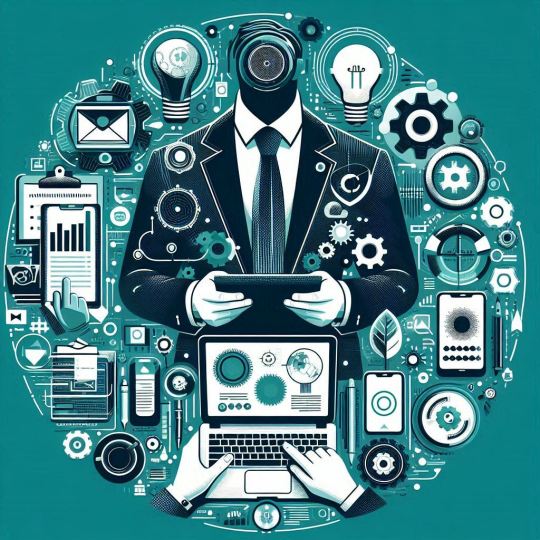
It is a feature-laden project manager that lets you handle tasks, projects, and workflows of all types. Its ease of use and user-friendly interface, complimented with diverse dashboards cater to audiences between small teams and large organizations. Task assignments, time tracking, goal setting, and collaboration options allow you to stop hopping between spreadsheets and emails so your projects are complete efficiently.
2. CRM–– Zoho CRM
Zoho CRM — Your Intelligent Customer Relationships Management System. Among other features, it has lead management, sales automation, and analytics to make sales performance improve on a consistent streamline both administrative aspect as well as customer satisfaction. Due to its integration capabilities with other Zoho products, as well as most third-party applications, It has become a flexible option for businesses that are ready to supercharge their customer relationship management.
3. Accounting: Zoho Books
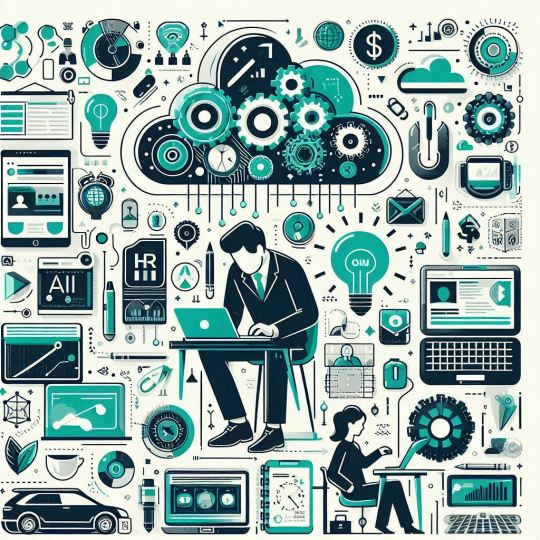
Zoho Books- The Best Accounting Software for Business Owners Invoicing, expense tracking and financial reporting are some of its features. You can also rest assured that your taxes are being handled correctly and always have the latest view of your financial health to help you manage your finances better.
4. HR Management: monday. com HR
It is a complete human resources management software that helps companies to better structure their workforce. This system provides with facilities like employee on boarding, performance tracking, payroll management etc. With the platform's ease of use, UI simplicity, and automation capabilities in HR processes that would otherwise take hours away from key HR initiatives.
5. Payroll: OnPay
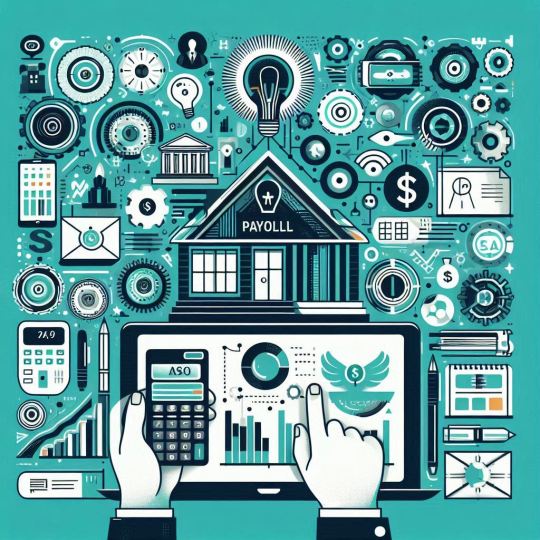
OnPay is an excellent payroll software for businesses of all sizes. It is a cloud payroll software for businesses that ensures complete compliance and automation of top-class payroll calculations, tax filings & employee payments. Additionally, OnPay provides HR and benefits management tools, effectively providing a full-fledged employee pay management solution.
6. Point-of-Sale (POS): eHopper
Versatile Point of Sale Software for Businesses Up To Mid-Sized It offers services like Inventory management, sales tracking and customer management. This makes eHopper a perfect choice for businesses that intend to simplify their sales operations using an affordable and intuitive POS system.
7. Inventory Management: Cin7
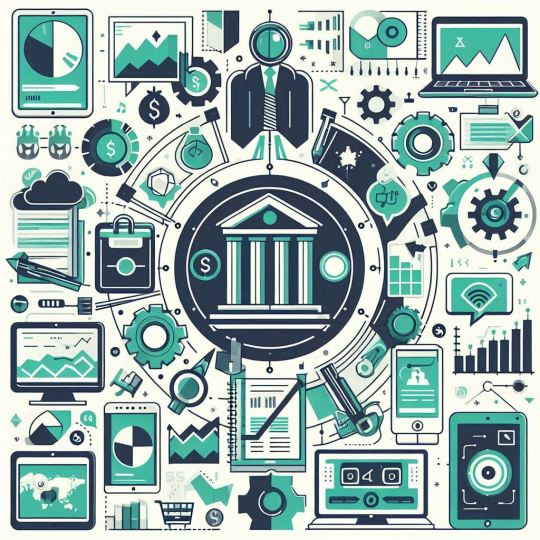
While there are plenty of other inventory management systems available, Cin7 stands out as one of the most popular options for small to mid-size businesses (SMBs) looking to get their stock levels, orders and supply chain operations under control. These functionalities consist of real-time inventory monitoring, order processing and e-commerce platform integration. With the powerful feature set of Cin7, businesses can keep inventory at an optimal level and fulfill customer demands to the hilt.
8. Website Builder: Weebly
Weebly is the website builder that you can also use to build your site or blog. It has lots of customizable templates, drag-and-drop functionality, and e-commerce ready to go. With Weebly, you can create a professional website even if you are a tech noob and give your business the relevant online visibility it needs.
9. Recruiting: ZipRecruiter
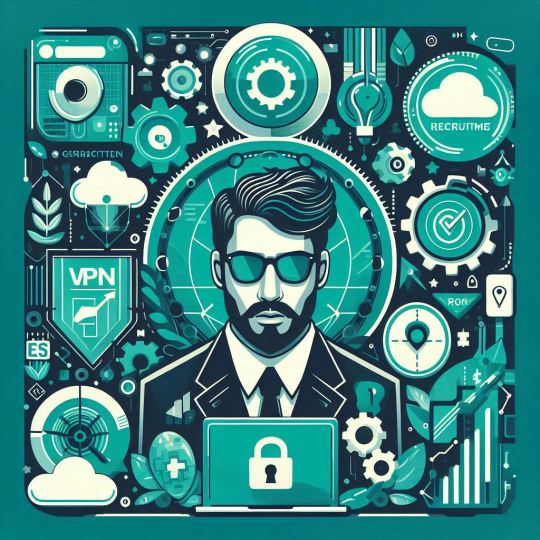
ZipRecruiter: Popular rated job search app for businesses on board. They provide hiring solutions through features like job posting candidates filtering and tracking the application. AI-powered matching from ZipRecruiter surfaces more relevant candidates to businesses faster.
10. VPN: NordVPN
It is a secure, encrypted VPN application that will make sure that you and your business stay safe as you work with the web. It provides features of encrypted connections, threat protection and global server access as well. In this way, It guarantees secure data in companies and privacy on internet.
Conclusion
The business software tools a company uses are very important to increase productivity and power growth. The above-mentioned tools are some of the best & flexible according to the fact which can assist businesses for any sized groups and help them attain their desired objectives. Implementing these tools in your operations can also help speed up processes and lead to higher customer satisfaction, as well as allow you to be on top of the competition.
#business#business growth#innovation#startup#entrepreneur#100 days of productivity#project management#sales#payroll#hr management#hr software#hr services#ai#artificial intelligence#technology#tech#techinnovation
2 notes
·
View notes
Text
It is 10:39 PM. It is incredibly humid outside, amplifying the smells of cow manure by 1000x. While this condition is not ideal, the vapor-saturated air also brings out the delicious smell of our local chocolate factory and the sweet aroma of the apple orchard that everyone in my small central Pennsylvania town is welcome to enjoy. It is difficult to imagine that, in just 70 days, I will be moving away from the charming town I grew up in, where cows outnumber people, and the locals indulge in ‘garage parties’- the practice of setting up lawn chairs in your garage in the late evening, when the heat has finally subsided, and inviting everyone within a 5-mile radius to stop by and have a beer. In 2 months, I will be saying ‘goodbye’ to my part-time position at the local retirement home and moving to a quaint liberal arts college in New England. At first glance, the environments of these two places that I will call ‘home’ are completely different and incompatible. My home-town- extremely conservative with wide swaths of farmland and lovingly coined the “Amish capital of the world” , versus my college town- a very, very progressive, mountainous region with many cultural events and arts performances. They epitomize the difference between a “small-town” feel and a “college-town” feel. Hopefully, after being there for a few months, I will come to realize that they are not so different. And, if they are different, maybe that’s okay. My goals as I begin this blog are varied and many. First, I want to get better at writing. I have an extremely difficult time articulating my thoughts. I figure that making a coordinated effort to write might improve my skills, so I feel on-track when I begin my first semester of college. While I attempted to write in a google doc, I found I wasn’t able to hold myself accountable, and that perhaps posting on a public forum would be helpful. Next, my difficulty with articulating my thoughts, unfortunately, lead to a certain dependence on Chat GPT, undoubtedly making my writing worse that it had been before I discovered that God-forsaken app. Reason 3- I just got a new computer for college, and the keyboard is huge. I need to practice writing on a keyboard that is 1.5x wider than what I’m used to. Finally, I wanted to blog so I could share my life, give advice, get advice, and stay in touch with those at home who are interested. I know many bloggers have a certain “genre” that they stick to- they might comment on the news, spirituality, or they may even share recipes. Maybe one day I will think of a genre, but I think for now, I’ll just share about my life. Let’s start with today.
I woke up this morning at 5:15 so I could get to my 6:15 shift. Anxiety will likely be a topic I touch on quite frequently. The thought of dishing out grapefruit and prunes in the morning nearly sent me over the edge, and I couldn’t sleep. To be fair, I am a new employee- I started about 3 weeks ago. Each “number” on the schedule has different job duties, and I had never done those duties before… how was I supposed to know how many grapefruit sections to put into a dish???? It’s three. As expected, everything was just fine, although I accidentally interrupted a table while they were in the middle of praying. Sorry! I really love my job so far, and I can only hope that I keep enjoying it. When I got home, I was determined to read a good section my book, but I ended up napping. Trying to enjoy the little things that make me human. Listening to country music on the car ride home because something about the heat makes me crave a southern twang. Rushing up to my room right as I get home so I can turn on my AC and hope it cools down my room in time for bed. Sitting on the back porch with a cozy blanket, even though it is a bit too hot for that. Seeing the firefly’s twinkle in the backyard and pretending not to notice my neighbors moving around outside. Making plans with friends now that we are finally free. I am in love with life.

Today, my best friend gifted me this plush for my dorm room. His name is Apollo. ☀️
2 notes
·
View notes
Text
GPS Employee Tracking App - ONEMONITAR
Monitor your team's location in real time with ONEMONITAR’s GPS employee tracking app. Perfect for field teams, this app ensures you always know where your employees are, improving security and productivity.
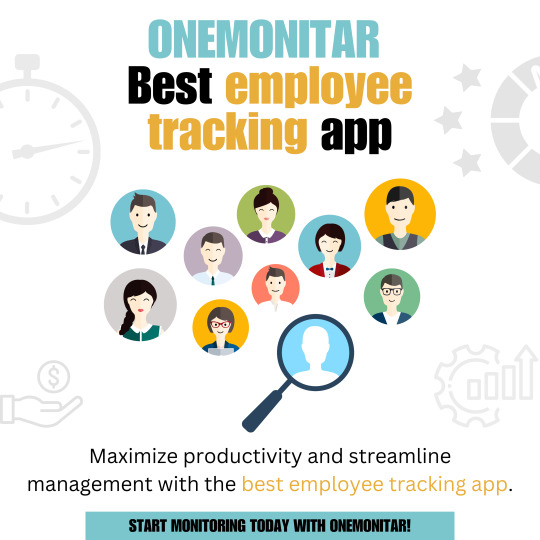
#GPS employee tracking app#Employee activity monitoring app#Employee productivity tracking app#Employee tracking app for Android#Remote employee tracking app#Real-time employee tracking app#Employee location tracking app#Employee tracking software for small business#Employee performance tracking app#Mobile employee tracking app#Best employee tracking app#Employee monitoring software
0 notes
Text
Generative AI, innovation, creativity & what the future might hold - CyberTalk
New Post has been published on https://thedigitalinsider.com/generative-ai-innovation-creativity-what-the-future-might-hold-cybertalk/
Generative AI, innovation, creativity & what the future might hold - CyberTalk
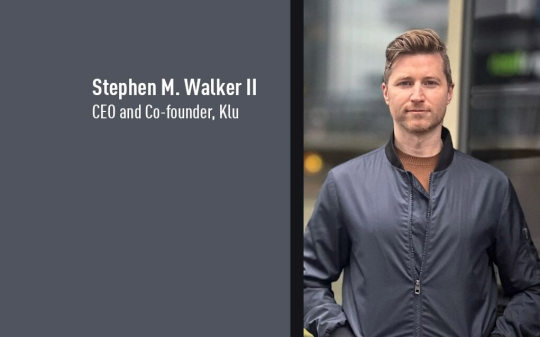

Stephen M. Walker II is CEO and Co-founder of Klu, an LLM App Platform. Prior to founding Klu, Stephen held product leadership roles Productboard, Amazon, and Capital One.
Are you excited about empowering organizations to leverage AI for innovative endeavors? So is Stephen M. Walker II, CEO and Co-Founder of the company Klu, whose cutting-edge LLM platform empowers users to customize generative AI systems in accordance with unique organizational needs, resulting in transformative opportunities and potential.
In this interview, Stephen not only discusses his innovative vertical SaaS platform, but also addresses artificial intelligence, generative AI, innovation, creativity and culture more broadly. Want to see where generative AI is headed? Get perspectives that can inform your viewpoint, and help you pave the way for a successful 2024. Stay current. Keep reading.
Please share a bit about the Klu story:
We started Klu after seeing how capable the early versions of OpenAI’s GPT-3 were when it came to common busy-work tasks related to HR and project management. We began building a vertical SaaS product, but needed tools to launch new AI-powered features, experiment with them, track changes, and optimize the functionality as new models became available. Today, Klu is actually our internal tools turned into an app platform for anyone building their own generative features.
What kinds of challenges can Klu help solve for users?
Building an AI-powered feature that connects to an API is pretty easy, but maintaining that over time and understanding what’s working for your users takes months of extra functionality to build out. We make it possible for our users to build their own version of ChatGPT, built on their internal documents or data, in minutes.
What is your vision for the company?
The founding insight that we have is that there’s a lot of busy work that happens in companies and software today. I believe that over the next few years, you will see each company form AI teams, responsible for the internal and external features that automate this busy work away.
I’ll give you a good example for managers: Today, if you’re a senior manager or director, you likely have two layers of employees. During performance management cycles, you have to read feedback for each employee and piece together their strengths and areas for improvement. What if, instead, you received a briefing for each employee with these already synthesized and direct quotes from their peers? Now think about all of the other tasks in business that take several hours and that most people dread. We are building the tools for every company to easily solve this and bring AI into their organization.
Please share a bit about the technology behind the product:
In many ways, Klu is not that different from most other modern digital products. We’re built on cloud providers, use open source frameworks like Nextjs for our app, and have a mix of Typescript and Python services. But with AI, what’s unique is the need to lower latency, manage vector data, and connect to different AI models for different tasks. We built on Supabase using Pgvector to build our own vector storage solution. We support all major LLM providers, but we partnered with Microsoft Azure to build a global network of embedding models (Ada) and generative models (GPT-4), and use Cloudflare edge workers to deliver the fastest experience.
What innovative features or approaches have you introduced to improve user experiences/address industry challenges?
One of the biggest challenges in building AI apps is managing changes to your LLM prompts over time. The smallest changes might break for some users or introduce new and problematic edge cases. We’ve created a system similar to Git in order to track version changes, and we use proprietary AI models to review the changes and alert our customers if they’re making breaking changes. This concept isn’t novel for traditional developers, but I believe we’re the first to bring these concepts to AI engineers.
How does Klu strive to keep LLMs secure?
Cyber security is paramount at Klu. From day one, we created our policies and system monitoring for SOC2 auditors. It’s crucial for us to be a trusted partner for our customers, but it’s also top of mind for many enterprise customers. We also have a data privacy agreement with Azure, which allows us to offer GDPR-compliant versions of the OpenAI models to our customers. And finally, we offer customers the ability to redact PII from prompts so that this data is never sent to third-party models.
Internally we have pentest hackathons to understand where things break and to proactively understand potential threats. We use classic tools like Metasploit and Nmap, but the most interesting results have been finding ways to mitigate unintentional denial of service attacks. We proactively test what happens when we hit endpoints with hundreds of parallel requests per second.
What are your perspectives on the future of LLMs (predictions for 2024)?
This (2024) will be the year for multi-modal frontier models. A frontier model is just a foundational model that is leading the state of the art for what is possible. OpenAI will roll out GPT-4 Vision API access later this year and we anticipate this exploding in usage next year, along with competitive offerings from other leading AI labs. If you want to preview what will be possible, ChatGPT Pro and Enterprise customers have access to this feature in the app today.
Early this year, I heard leaders worried about hallucinations, privacy, and cost. At Klu and across the LLM industry, we found solutions for this and we continue to see a trend of LLMs becoming cheaper and more capable each year. I always talk to our customers about not letting these stop your innovation today. Start small, and find the value you can bring to your customers. Find out if you have hallucination issues, and if you do, work on prompt engineering, retrieval, and fine-tuning with your data to reduce this. You can test these new innovations with engaged customers that are ok with beta features, but will greatly benefit from what you are offering them. Once you have found market fit, you have many options for improving privacy and reducing costs at scale – but I would not worry about that in the beginning, it’s premature optimization.
LLMs introduce a new capability into the product portfolio, but it’s also an additional system to manage, monitor, and secure. Unlike other software in your portfolio, LLMs are not deterministic, and this is a mindset shift for everyone. The most important thing for CSOs is to have a strategy for enabling their organization’s innovation. Just like any other software system, we are starting to see the equivalent of buffer exploits, and expect that these systems will need to be monitored and secured if connected to data that is more important than help documentation.
Your thoughts on LLMs, AI and creativity?
Personally, I’ve had so much fun with GenAI, including image, video, and audio models. I think the best way to think about this is that the models are better than the average person. For me, I’m below average at drawing or creating animations, but I’m above average when it comes to writing. This means I can have creative ideas for an image, the model will bring these to life in seconds, and I am very impressed. But for writing, I’m often frustrated with the boring ideas, although it helps me find blind spots in my overall narrative. The reason for this is that LLMs are just bundles of math finding the most probable answer to the prompt. Human creativity —from the arts, to business, to science— typically comes from the novel combinations of ideas, something that is very difficult for LLMs to do today. I believe the best way to think about this is that the employees who adopt AI will be more productive and creative— the LLM removes their potential weaknesses, and works like a sparring partner when brainstorming.
You and Sam Altman agree on the idea of rethinking the global economy. Say more?
Generative AI greatly changes worker productivity, including the full automation of many tasks that you would typically hire more people to handle as a business scales. The easiest way to think about this is to look at what tasks or jobs a company currently outsources to agencies or vendors, especially ones in developing nations where skill requirements and costs are lower. Over this coming decade you will see work that used to be outsourced to global labor markets move to AI and move under the supervision of employees at an organization’s HQ.
As the models improve, workers will become more productive, meaning that businesses will need fewer employees performing the same tasks. Solo entrepreneurs and small businesses have the most to gain from these technologies, as they will enable them to stay smaller and leaner for longer, while still growing revenue. For large, white-collar organizations, the idea of measuring management impact by the number of employees under a manager’s span of control will quickly become outdated.
While I remain optimistic about these changes and the new opportunities that generative AI will unlock, it does represent a large change to the global economy. Klu met with UK officials last week to discuss AI Safety and I believe the countries investing in education, immigration, and infrastructure policy today will be best suited to contend with these coming changes. This won’t happen overnight, but if we face these changes head on, we can help transition the economy smoothly.
Is there anything else that you would like to share with the CyberTalk.org audience?
Expect to see more security news regarding LLMs. These systems are like any other software and I anticipate both poorly built software and bad actors who want to exploit these systems. The two exploits that I track closely are very similar to buffer overflows. One enables an attacker to potentially bypass and hijack that prompt sent to an LLM, the other bypasses the model’s alignment tuning, which prevents it from answering questions like, “how can I build a bomb?” We’ve also seen projects like GPT4All leak API keys to give people free access to paid LLM APIs. These leaks typically come from the keys being stored in the front-end or local cache, which is a security risk completely unrelated to AI or LLMs.
#2024#ai#AI-powered#Amazon#animations#API#APIs#app#apps#Art#artificial#Artificial Intelligence#Arts#audio#automation#azure#Building#Business#cache#CEO#chatGPT#Cloud#cloud providers#cloudflare#Companies#Creative Ideas#creativity#cutting#cyber#cyber criminals
3 notes
·
View notes
Link
2 notes
·
View notes
Text
Looking for the best performance management software, work management software, employee attendance app and daily task tracker & management software? Sign up with TrackHR now & get a free one month trial, TODAY
4 notes
·
View notes